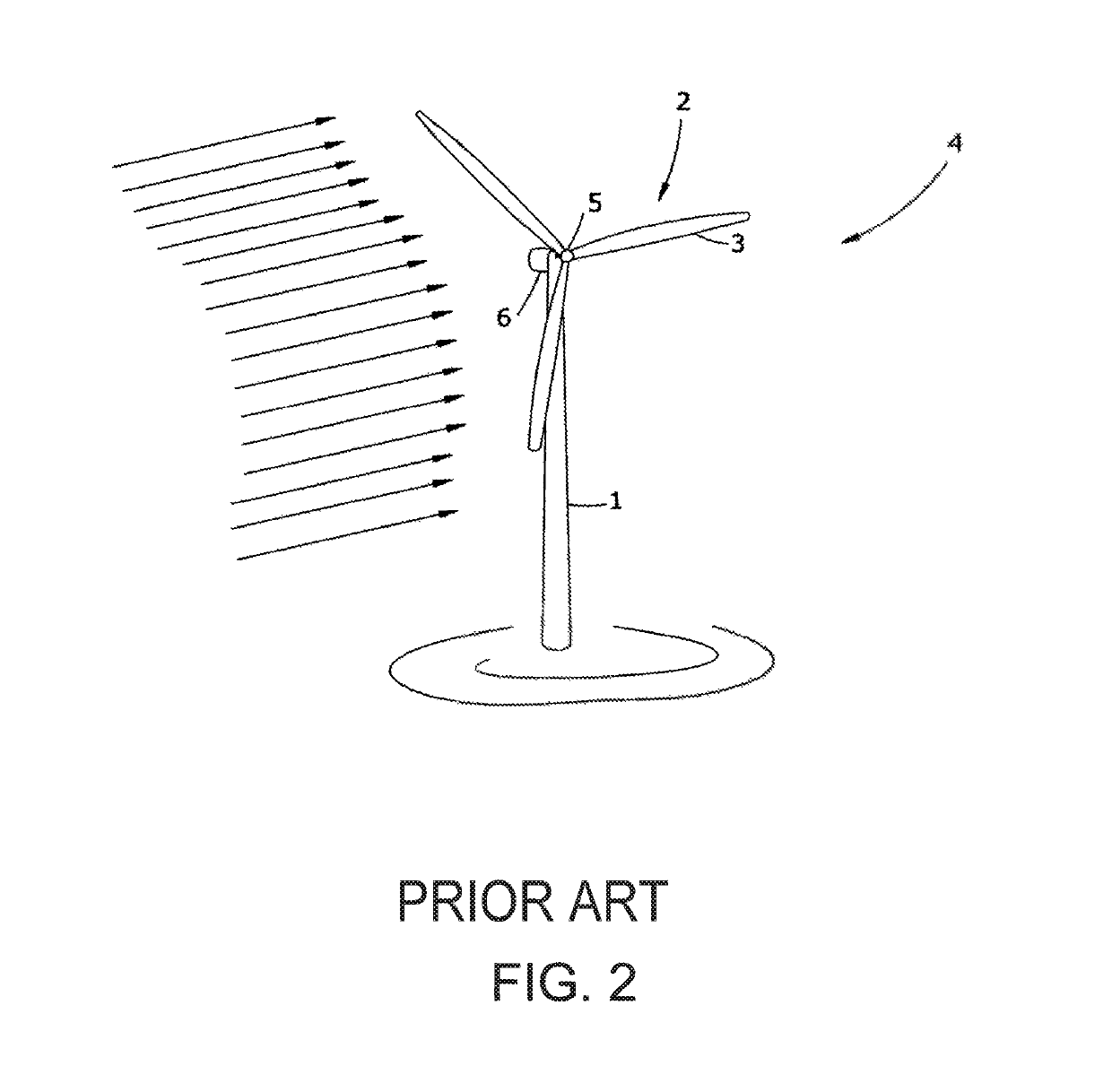Wind turbine for use in high winds
a wind turbine and high-wind technology, applied in the direction of machines/engines, sustainable buildings, mechanical equipment, etc., can solve the problems of finite fossil fuel supply, uncompetitive cost of this power, and other drawbacks of fossil fuel combustion
- Summary
- Abstract
- Description
- Claims
- Application Information
AI Technical Summary
Benefits of technology
Problems solved by technology
Method used
Image
Examples
Embodiment Construction
[0055]FIG. 1 is a perspective view of a conventional power-generation windmill in the prior art. Prior art electricity-generating windmills are only able to capture a small portion of the wind energy passing through them. Some of the reasons for this are explained below.
[0056]The blades of electricity-generating windmills turn in a circle, so it will be useful to think of the area within a complete rotation covered by the blades of a windmill, as they turn, as 360 degrees. The area of a blade can be seen in terms of the number of “degrees” within a 360-degree turn that the blade covers. For example, a blade which covers 4 degrees would cover 1 / 90 of the total area embraced by the blades as they turn. A blade which covers 1 degree would cover 1 / 360 of the total area embraced by the blades as they turn.
[0057]Electricity-generating windmills of the prior art generally include three blades, which each cover 2.5 to 3 degrees. Therefore, the total area embraced by the blades amounts to th...
PUM
 Login to View More
Login to View More Abstract
Description
Claims
Application Information
 Login to View More
Login to View More - R&D
- Intellectual Property
- Life Sciences
- Materials
- Tech Scout
- Unparalleled Data Quality
- Higher Quality Content
- 60% Fewer Hallucinations
Browse by: Latest US Patents, China's latest patents, Technical Efficacy Thesaurus, Application Domain, Technology Topic, Popular Technical Reports.
© 2025 PatSnap. All rights reserved.Legal|Privacy policy|Modern Slavery Act Transparency Statement|Sitemap|About US| Contact US: help@patsnap.com



